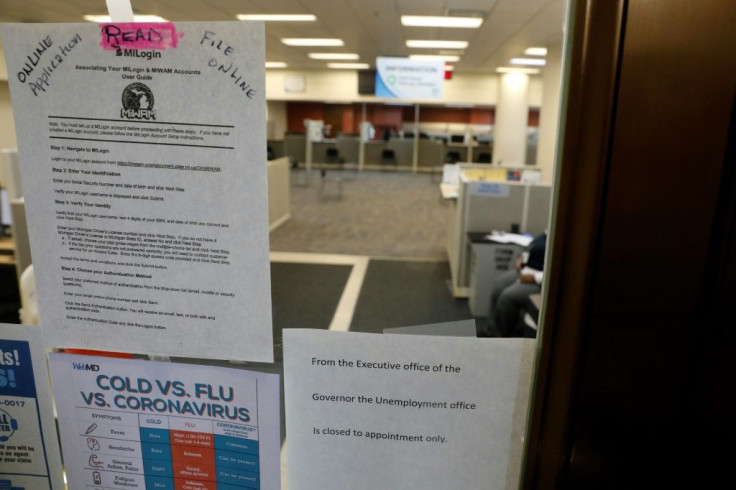Record Number Of US Workers Receiving Jobless Benefits
US job losses have kept soaring amid the nationwide shutdowns to battle the coronavirus, now surpassing 30 million in six weeks, and a record number of workers are receiving unemployment benefits, the Labor Department said Thursday.
Another 3.84 million US workers filed first-time claims for jobless benefits in the week ended April 25, according to the department's weekly data.
And even as the government rushed to expand benefits and provide aid to small businesses to pay their workers through the Paycheck Protection Program and other measures, the total number of workers actually receiving jobless benefits surged by more than 2.2 million in the week to a record 17.99 million.
But that figure is reported with a two-week lag, and with state unemployment offices overwhelmed by applicants swamping their archaic computer systems, many people have not been able to file claims or have not received a decision on whether they will get them.
While the jobless claims data do not directly correlate with the all-important monthly unemployment report, due out next week, the surge in people who have lost jobs is a good indication of bad news to come.
"We expect job losses in April will be shockingly high," Rubeela Farooqi of High Frequency Economics said in an analysis. "Labor market conditions have deteriorated sharply in response to the economy largely being closed for virus containment."
The unemployment rate in March jumped to 4.4 percent from 3.5 percent a month earlier, but that was before the strictest lockdowns were imposed nationwide.
Layoffs have accelerated in April and economists expect the rate to surge into double digits when the Labor Department releases the latest jobs report May 8.

Economist Joel Naroff warned that "The unemployment rate could approach the record high set during the Great Depression."
"Some firms that have held on now realize the economy will not open all at once and they are starting to furlough workers," Naroff said.
Even though the jobless claims show applications slowing slightly in the lates week "with states using Cro Magnum Era unemployment computer systems, the backlogs remain high," he said.
Federal Reserve Chair Jerome Powell on Wednesday warned that the high unemployment could persist for an extended period, and inflict lasting damaging on the economy.
"It will take some time for us to get back to a more normal level of unemployment," he said.
That along with the possibility that firms will go out of business could do long-term "damage to the productive capacity of the economy."
Oxford Economics projects jobs losses of 24 million in April, pushing the unemployment rate to 14 percent -- surpassing the 10 percent peak hit in October 2009 during the global financial crisis.
The economic damage from the coronavirus-induced shutdowns was also reflected in a 7.5 percent plunge in consumer spending in March, according to a Commerce Department report Thursday.
That was a key factor driving the 4.8 percent contraction of the US economy in the first quarter, as shops and restaurants closed nationwide and the travel and tourism industry was shuttered.
© Copyright AFP 2024. All rights reserved.





















